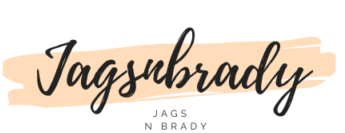A process flow chart is a great way to visualize the steps involved in a particular process. It can help you see where there might be bottlenecks, and it can help you identify opportunities for improvement. Additionally, using a process flow chart can help ensure that all steps in the process are carried out correctly. After all, if your employees don’t know the steps involved in a process or how they relate to one another, it is impossible for them to carry out that process correctly.
The traditional way of creating a process flow chart is by using the following symbols:
1. Start/End boxes.
These boxes tell you where a particular process begins and ends. There are times when it is not necessary, so you can skip this box if you want to.
2. Input/Output boxes.
The input or output flows into or out of these boxes respectively. They are the literal endpoints in a process flow chart because there are no steps that jump from one box to another box in between them.
3. Data Store boxes.
These boxes show you places where data may be stored, either temporarily or permanently. They can also show you where the action is initiated and completed without any interactions with other processes or parts of the organization.
4. Process box.
Here you will find the steps involved in a particular process and how they relate to one another.
5. Decision box.
This type of box symbolizes a point in the process where decisions, measurements, or evaluations are made about how to move forward with the process or whether to end it. This is often accompanied by an arrow that originates from the box and points either left or right depending on whether you continue with the process or end it.
6. Flowline.
These flow lines jump from one step to another and connect them, allowing you to visualize how each step is related to the next. They also show the actual path the data follows as it moves through a particular process.
Process flows can be helpful for achieving several different goals:
1) Improve customer experience.
2) Improve employee experience.
3) Improve process efficiency.
4) Identify gaps in the process.
5) Optimize individual steps.
6) Increase bottom-line profit.
Listed below are just some of the benefits and applications of creating and using a process flow chart:
1. Process Improvement.
Using a process flow chart can help you identify opportunities for improvement in your work, whether it be at home or in the office. You should start by identifying the areas that need improvement and then sketching out possible solutions to address those issues on an individual process flow chart.
2. Process Management.
Using process flow charts, you can take the steps involved in a particular process and put them into an order that makes sense. This gives other people who may need to use that process a clear idea of how it works and what steps are involved. You can also show where there are dependencies or what other processes are required before a particular process can take place.
3. Process Documentation.
Documenting processes in general with a flowchart makes it easier to train new employees who will be expected to carry out the same tasks, and it provides you will a clear record of all steps involved in any particular job or task. You may even find that creating an individual process flow chart for each job or task, helps you make your work more organized and efficient.
4. Business Analysis.
Using a process flow chart to analyze the steps involved in any particular business process can help you identify problematic areas, bottlenecks, or other issues that may be preventing you from being as productive as you would like to be.
One cool way to make process flow charts is by using Venngage — an online flow chart maker and infographic maker that offers free flow chart templates for everyone. Here are some flow chart examples from their website.
Also Read: Fulfilling Hobbies You Can Pick in Your 20s
Venngage
Venngage
Process flowcharts can be a great way to improve workflow and efficiency at work, as well as streamline the process of completing tasks. It is also a good tool for planning or documenting processes in general.
By using symbols and lines to show how each step relates to the next, you are able to get an idea of how complex processes are broken down, and how they work. This can be helpful for identifying potential problems in the process before they actually happen. If you’re having a hard time making one from scratch, consider using Venngage. To start, click here.
